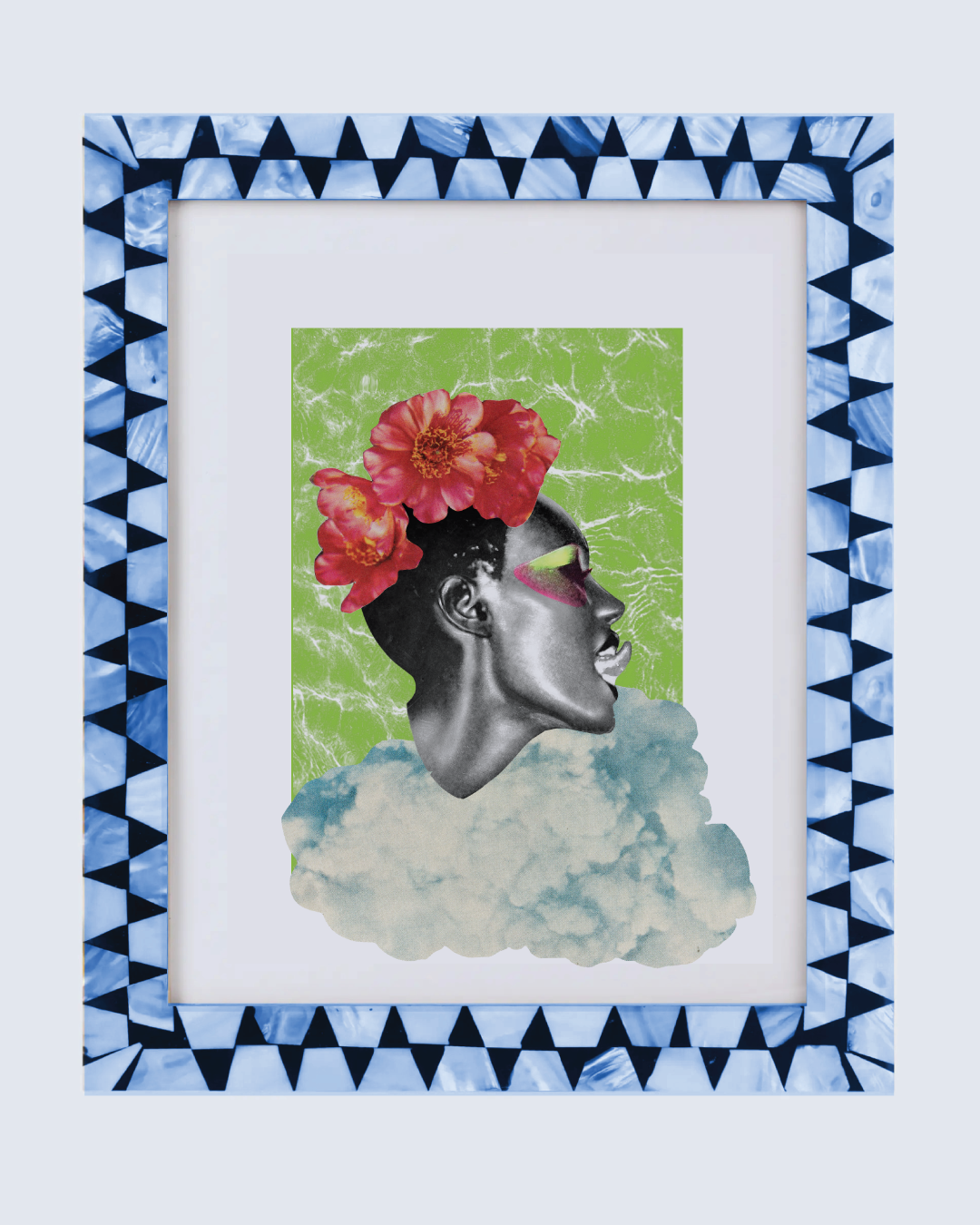 Image 1 of 1
Image 1 of 1


Nicho for Grace
8×10” archival print on 130lb paper, fits 8×10 mat and frame with 5×7 opening. Mat and Frame not included.
Holy Mother of Self-Iteration
I first saw Grace Jones on MTV in her music video Slave to the Rhythm—a four minute long visual manifesto made of a surrealist collage of imagery. As a child the most unforgettable moment featured a giant robotic “Grace” head rising from a sand dune, opening its mouth, and swallowing a car—also driven by Grace. The goddess devouring her own myth.
This singular piece of pop culture has become fertile ground for generations of artists, fashion designers, and celebrities to “borrow” from. The video didn’t just entertain—it unmade and remade the possibilities of art, self-presentation, and invention.
While so many other women on TV were possessed by the male gaze, performing for it—she was possessing it, redirecting it, looking down at it, and blinding it with her glare. While I couldn’t describe it at the time I knew I was witnessing something sacred and subversive.
From sparring on late-night talk shows with Joan Rivers to belting “Little Drummer Boy” on Pee-wee’s Playhouse, wrapped in a leather breastplate and a sweeping fur coat—like a psychedelic Santa from another dimension—Grace Jones was doing more than performing. She was laying the foundation for a new kind of literacy: the language of queerness, camp, and couture.
$5 from each print sold will be donated to CHIRLA
8×10” archival print on 130lb paper, fits 8×10 mat and frame with 5×7 opening. Mat and Frame not included.
Holy Mother of Self-Iteration
I first saw Grace Jones on MTV in her music video Slave to the Rhythm—a four minute long visual manifesto made of a surrealist collage of imagery. As a child the most unforgettable moment featured a giant robotic “Grace” head rising from a sand dune, opening its mouth, and swallowing a car—also driven by Grace. The goddess devouring her own myth.
This singular piece of pop culture has become fertile ground for generations of artists, fashion designers, and celebrities to “borrow” from. The video didn’t just entertain—it unmade and remade the possibilities of art, self-presentation, and invention.
While so many other women on TV were possessed by the male gaze, performing for it—she was possessing it, redirecting it, looking down at it, and blinding it with her glare. While I couldn’t describe it at the time I knew I was witnessing something sacred and subversive.
From sparring on late-night talk shows with Joan Rivers to belting “Little Drummer Boy” on Pee-wee’s Playhouse, wrapped in a leather breastplate and a sweeping fur coat—like a psychedelic Santa from another dimension—Grace Jones was doing more than performing. She was laying the foundation for a new kind of literacy: the language of queerness, camp, and couture.
$5 from each print sold will be donated to CHIRLA
